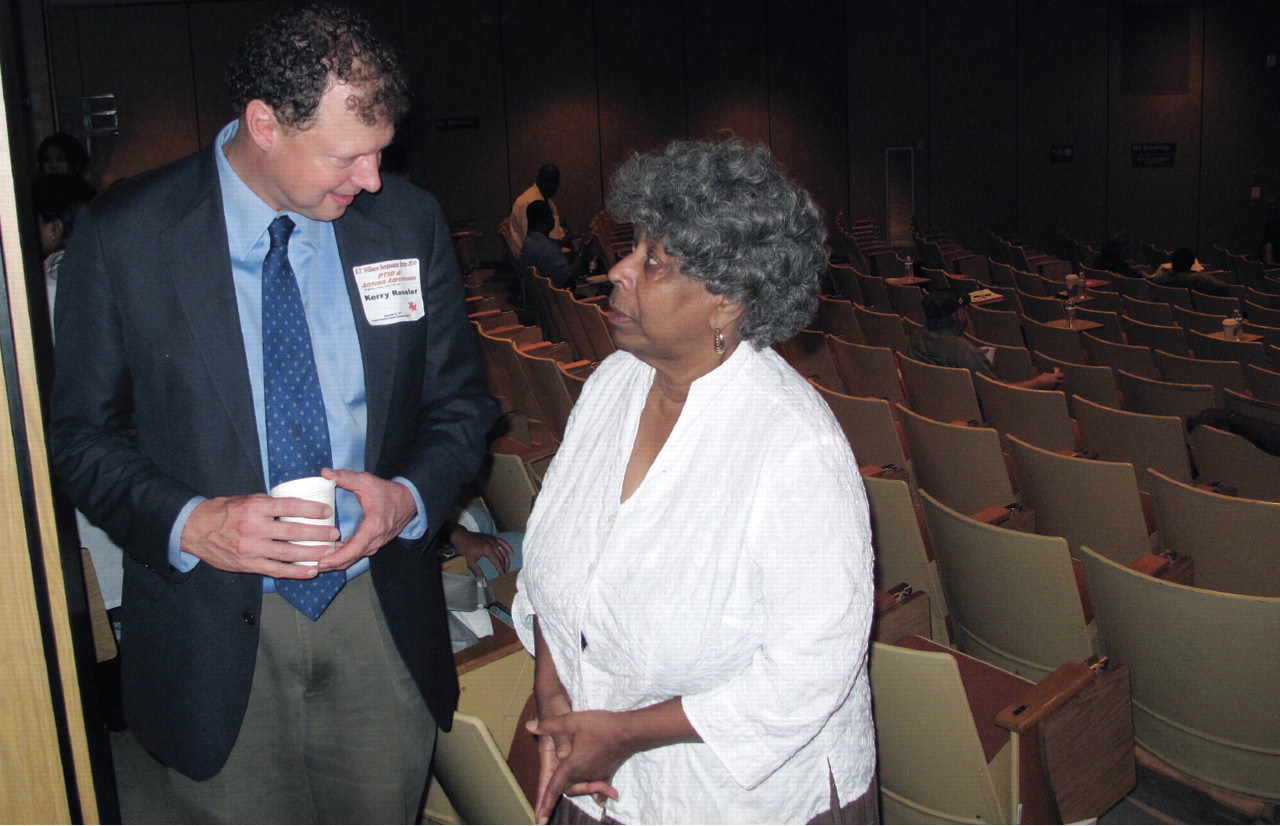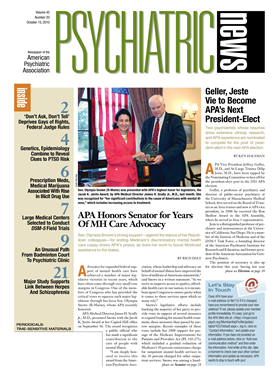An Emory University research team is trying to gather epidemiological data on thousands of inner-city residents in Atlanta with DNA samples to seek out correlation between social and biological risk factors for posttraumatic stress disorder.
The Grady Trauma Project has recruited more than 3,000 participants so far from the general medical clinic at Grady Health System. That number will grow to a projected 8,000 by 2013. About 94 percent of participants are African American, and 65 percent are female; their average age is 39.
“High rates of trauma are the rule rather than the exception in this population,” principal investigator Kerry Ressler, M.D., Ph.D., told attendees at the 2010 E.Y. Williams Symposium on PTSD and African Americans, held at the Howard University College of Medicine in Washington, D.C., in September. Ressler is a Howard Hughes Medical Investigator, an associate professor of psychiatry and behavioral sciences at Emory, and codirector of the Fulton County Mental Health System's trauma clinic.
The symposium honors the late E.Y. Williams, M.D., a Howard graduate and chair of its Department of Psychiatry from 1952 to 1970.
Trauma rates among the Atlanta-area participants are as high as those among returning combat veterans, said Ressler. Many have lifetime histories of being victims of physical attack, child abuse, or rape. Those traumas also happen in a broader social context, he said. Individuals with PTSD are more likely to be poor, to live in unsafe neighborhoods, or to have a family member who was in jail or who was murdered. About 82 percent of those people have experienced two or more forms of trauma.
“These trauma exposures occur early in life and often include physical or emotional abuse or neglect and other forms of family violence,” said Ressler.
People without childhood trauma were at low risk for PTSD after experiencing adult trauma, but child trauma or abuse was associated with increased risk of psychiatric problems following adult trauma.
For instance, on average, persons who experienced two or three types of trauma after childhood recorded a PTSD Symptoms Scale score of 9.8 if they had no history of child abuse, but 14.9 if they had experienced one type of child abuse, and 19.0 with two types of child abuse. Similar patterns were observed for depression.
“If children are raised in a stressful environment, adaptations during development may alter the stress/threat response system,” priming them for the hyperarousal characterizing PTSD, said Ressler.
Given that background, the Emory researchers looked for biological correlates of the PTSD symptoms in a subset of their study population.
They chose an HPA axis gene, FKBP5, a chaperone protein involved in glucocorticoid receptor feedback sensitivity, which is associated with PTSD.
Polymorphisms in the FKBP5 gene were associated with distinct patterns of PTSD symptoms in adults when genotype was plotted against childhood abuse. People with the GG variant had only a minor rise in PTSD symptom scores when exposed to even two types of childhood abuse. However, those with the AA allele recorded significantly higher scores, while the AG allele results were in between.
“FKBP5 is one genetic mechanism by which childhood trauma may increase risk in adults for PTSD symptoms, possibly through increased sensitization of fear pathways,” said Ressler.
The project team also sampled 362 of these highly traumatized subjects for a pooled genomewide association study to identify genes associated with PTSD risk or resilience. Of those subjects, 188 had PTSD, while 174 did not. The two groups were matched for gender, age, trauma history, and substance use history.
Comparing the results of that initial study with mRNA from the amygdala narrowed the list down to 17 candidate genes. The top candidate was ADCYAP1R1, a gene regulating expression of pituitary adenylate cyclase-activating peptide (PACAP) in the bed nucleus of the stria terminalis in the amygdala.
Other researchers have shown that PACAP in that region and the related PAC1 receptor are upregulated following chronic stress.
Higher levels of PACAP increase anxiety and startle response in rodents. The peptide had been studied in mice in tests of fear and extinction but not in humans, said Ressler.
Significant differences appeared in the role of PACAP levels in this group of humans, he said. Women with higher PACAP levels recorded greater startle responses and higher intrusive, avoidant, and hyperarousal symptom scores, compared with women with lower PACAP levels. No significant differences were observed in the same measures between men with higher or lower PACAP levels.
Those results were predicted by one single-nucleotide polymorphism in ADCYAP1R1. The polymorphism is found in a piece of DNA that is sensitive to estrogen, suggesting that the abnormal stress response is mediated by estrogen regulation of ADCYAP1R1 and explain why the effect is specific to women.
Ultimately, research into these and other biomarkers may contribute to better diagnosis and treatment monitoring and may lead to quick blood tests that could be combined with an interview in the emergency room to help clinicians assess risk for PTSD, said Ressler.
The study is sponsored by the National Institute of Mental Health, National Science Foundation, Howard Hughes Medical Institute, Burroughs-Wellcome Fund, Anxiety Disorders Association of America, and NARSAD.

